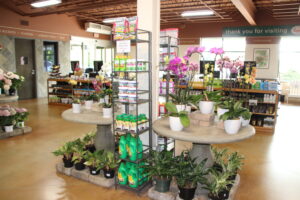The Realities of Mathematics
I just got back from the Super Floral Show (SFS) in Orlando, Fla., and the Seeley Conference at Cornell University in Ithaca, N.Y. SFS is a trade show that’s primarily focused on the indoor floral categories, and the audience includes most of the major supermarket, discount and home improvement chains. From a presentation standpoint, it puts you into sensory overload with explosions of color, design and variety.
The Seeley Conference is an event, now in its 23rd consecutive year, which tackles a different topic of critical importance to our industry each year. This year’s topic was “Profit Squeeze: Is Differentiation the Solution?”
It’s essentially an industry think-tank that unites experts from outside our industry with some of the brightest, most concerned members of our industry for frank, open discussions. The representatives from our industry come from all product categories and retail channels.
I’ve attended this event for many years, and though it requires a time commitment over a weekend and Ithaca isn’t the easiest place to get to I’ve never been disappointed in making the effort to attend. The learning experience, swapping of ideas and opinions, networking, and harnessing of the energy and commitment from others who share our industry’s passion, concerns and challenges make this a must-attend on my calendar each year.
For more information on this year’s conference, go to www.hort.cornell.edu/seeley conference. I encourage you to consider attending yourself!
Challenges We Face
A common discussion point in talking with growers, importers, wholesalers and retailers was the difficulty everyone is having with generating sales and in making a profit. OK, so I’m the master of the obvious: You didn’t have to attend either of these events to figure out this fact of life. Chances are you’re experiencing this firsthand in your own business.
Admittedly, we’re dealing with consumers who are being pressured on all sides with decreasing disposable spending power, and they are making hard decisions on what is really necessary in their lives; they’re prioritizing how and where they are spending their hard-earned dollars.
And your sales and profit challenges are shared by supply-chain partners, growers and manufacturers alike. There’s a paralyzing concern that if we increase costs or retails, we’ll lose market share and further dampen consumer demand. But as I look at what’s happening in almost every other industry, they are passing on the increased costs of doing business and raising retails accordingly. Granted, they may be shaving some profit margins, but they are doing what has to be done to make a profit!
The Simple Truth
As I’ve stated before, there are only three ways to increase sales:
- Get your existing customers to spend more per purchase occasion or increase the number of times they walk through your doors.
- Entice new customers to start purchasing from you.
- Raise your retails.
More than ever before, it’s most important to address your existing customer base. They have experience with you and some sense of relationship and loyalty; this is where you need to place your efforts and resources.
One executive from a major supermarket chain recently related to me that most of the other departments in the store were realizing sales increases, while floral was not. Market basket analyses are showing that shoppers are making fewer trips but spending more per visit. I find this to be true in my own life, too; to save time and gas both precious commodities I’m shopping fewer times per week and spending more in each store when I do shop.
While this may bode well for commodity purchases, this lower shopping frequency works against categories like ours, which are fueled by impulse sales. We live and die based on customer traffic. You might say that this change in consumer behavior is unique to the supermarkets and discounters, which are one-stop-shop venues, but I believe that it carries over to independent retailers as well.
So, if traffic counts are down and consumers aren’t stocking up, how are these retailers showing sales increases? The only way to account for this is that they are raising retails! For some unknown reason, we (not the consumer) are the real roadblock to increasing prices on our products to where they need to be to allow us to maintain reasonable profit levels and increase our sales dollars!
There’s a growing realization from suppliers and retailers that in today’s economy, they may, in fact, end up selling fewer units. That’s a reality of pressured consumer spending power. So it’s critically important that we get a fair price and profit from those sales we do achieve in order to sustain our financial viability. The old mentality that we’ll keep prices low and make the profit up with volume are long gone. It just doesn’t apply in today’s challenging economic environment.
Trust the Consumer
Today’s consumer, although financially strapped, is more rational and understanding that prices are increasing because of the input and transportation costs suppliers are incurring; they’re experiencing it on all fronts with all product categories.
We need to have the confidence that consumers will be more accepting of the profit pressure you face and won’t rebel and cease buying our products if you strategically and rationally increase retails. As I said last month, consumers know they will have to pay more, but their expectations are also going up on getting the best quality and experience for what they’re spending on. Keep this in mind.
It’s also time for us to break out of the formula-pricing practices; for too long, retailers have applied a standard multiplier to the cost for each category to establish their retail price points. It’s time now to think about establishing a strategic-pricing way of thinking.
Do you really think that the mass marketers are making a lot of profit on the $4 generic prescription drugs they’re all selling? But does this pricing policy bring increased foot traffic into the store where they will then spend additional dollars on realistically priced (read: profitable) items in the store? Does having a value price on a few identifiable items help establish a price image that carries over to other products with higher profits?
On high-velocity items, you want to be competitive and at least generate some margins. And by competitive, I mean with your real competition, not the boxes. Give your customer credit for recognizing that you offer more services and experiences than the mass-market retailers and knowing that there’s a cost inherent in providing these. On the rest of your assortment, you have the ability to charge prices you can make a real profit on.
And this strategic-pricing philosophy carries over to your advertising, too. I just saw an ad for an automotive retailer who was promoting giveaway prices on oil filters and oil. Think about this for a second: If the customer changes their oil filter, they’re going to have to replace their oil, right? So why even promote the oil at all? There are plenty of project-based advertising opportunities in your store that you can apply this thought process to.
Hopefully, the economic downturn we’re all experiencing will be over sooner than later. But I firmly believe that consumers’ changed mentalities and purchase behaviors will be more permanent, something we’ll have to deal with for the long term. So we’d all better learn to deal with it now…


















 Videos
Videos





